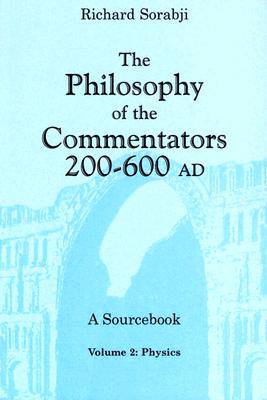
- Afhalen na 1 uur in een winkel met voorraad
- Gratis thuislevering in België vanaf € 30
- Ruim aanbod met 7 miljoen producten
- Afhalen na 1 uur in een winkel met voorraad
- Gratis thuislevering in België vanaf € 30
- Ruim aanbod met 7 miljoen producten
Omschrijving
This is the first work to draw on the four hundred years of transition from ancient Greek philosophy to the medieval philosophy of Islam and the West. During this period, philosophy was often written in the form of commentaries on the works of Plato and Aristotle. Many ideas wrongly credited to the Middle Ages derive from these centuries, such as that of impetus in dynamics and intentional objects in philosophy of mind. The later Neoplatonist commentators fought a losing battle with Christianity, but inadvertently made Aristotle acceptable to Christians by ascribing to him belief in a Creator God and human immortality. The commentators provide a panorama of up to a thousand years of Greek philosophy, much of which would otherwise be lost. They also serve as the missing link essential for understanding the subsequent history of Western philosophy.
The second volume of The Philosophy of the Commentators, 200-600 AD, A Sourcebook, deals with physics. The physics of the commentators was innovative: the Neoplatonists thought that the world of space and time was causally ordered by a nonspatial, nontemporal world, and this view required original thinking. Of the sixth-century Neoplatonists, Simplicius considered his teacher's ideas on space and time to be unprecedented, and Philoponus revised Aristotelianism to produce a new physics built around the Christian belief in God's Creation of the world. The thinkers of the Middle Ages borrowed from Philoponus and other commentators the proofs of a finite past, the idea of degrees of latitude in change and mixture, and in dynamics the idea of impetus and the defense of motion in a vacuum. All sources appear in English translation and are carefully linked and cross-referenced by editorial comment and explanation. Bibliographies are provided throughout.
Specificaties
Betrokkenen
- Auteur(s):
- Uitgeverij:
Inhoud
- Aantal bladzijden:
- 401
- Taal:
- Engels
- Reeks:
- Reeksnummer:
- nr. 2
Eigenschappen
- Productcode (EAN):
- 9780801489884
- Verschijningsdatum:
- 23/12/2004
- Uitvoering:
- Paperback
- Formaat:
- Trade paperback (VS)
- Afmetingen:
- 157 mm x 232 mm
- Gewicht:
- 630 g

Alleen bij Standaard Boekhandel
Beoordelingen
We publiceren alleen reviews die voldoen aan de voorwaarden voor reviews. Bekijk onze voorwaarden voor reviews.











